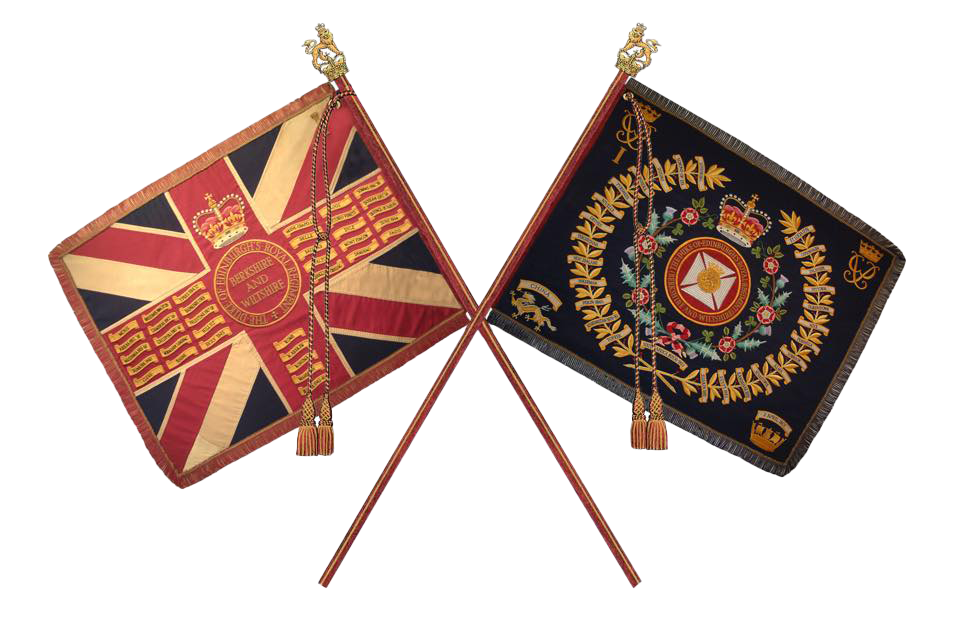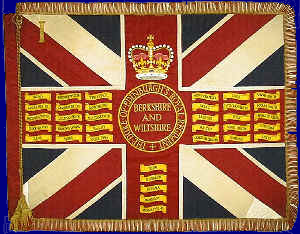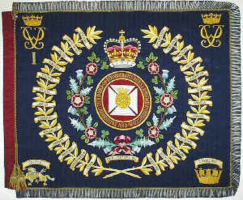
The spirit of a regiment was embodied in its colours (for the infantry) or guidons (for the cavalry). These standards (or flags) carried a regiment’s battle honours, awarded by monarchs to commemorate bravery on campaign.
British regiments had two colours, collectively called a stand. They served not only as a rallying point in battle, but also as a focus of regimental pride.
The King’s/Queen’s Colour was a union flag trimmed with gold fabric, and with the regiment’s insignia in the centre. It reminded all ranks of their loyalty and duty to their sovereign.
The Regimental Colour was a flag of a single colour – usually the colour of the regiment’s uniform facings (collar, lapels and cuffs) – again trimmed and with the insignia in the centre.
To lose the colours to the enemy was the greatest disgrace a regiment could suffer. Soldiers therefore defended them with their lives. When a battalion was presented with new colours, the old stand was normally laid up in a church or chapel associated with the regiment.

